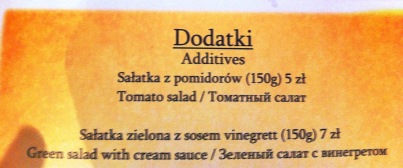How do you translate a dead poet? The November issue of Poetry magazine is dedicated to translation, with translator’s notes on each poem. I made a beeline for languages I know – and found they shared a problem. The poet was dead. So they had to direct their language questions to someone else.
The translator from Polish to English worked with someone who knew the poet. Jennifer Grotz translated “August 5, 1942”, dedicated to Janusz Korczak. It’s by Jerzy Ficowski, who took part in the Warsaw ghetto uprising. Grotz was used to working with the author, but co-translating was new for her. Wrangling over words and the lack of punctuation with Piotr Sommer, she found that “what we’ve been able to create — or negotiate — together seems quite clearly much more than either of us could have created singly”. Their co-creation starts like this:
What did the Old Doctor do Co robił Stary Doktor
in a cattle car w bydlęcym wagonie
riding to Treblinka on the 5th of August jadącym do Treblinki dnia 5 sierpnia
over a few hours of blood flow przez kilka godzin krwiobiegu
over the dirty river of time przez brudną rzekę czasu
I do not know nie wiem
What did Charon the volunteer do co robił Charon dobrowolny
ferryman without an oar przewoźnik bez wiosła
did he give the children the remains czy rozdał dzieciom resztę
of his breath zdyszanego tchu
and leave for himself i zostawił dla siebie
just the shiver in the bones tylko mróz po grzbiecie
… I was not there I don’t know … nie było mnie tam nie wiem
The translator from Welsh to English was working centuries, not decades after the poet’s death. So she spoke to the scholar who put the poetry online. Gwyneth Lewis consulted Dafydd Johnston for her translation of “The Wind” by medieval master Dafydd ap Gwilym. She had to steer between using language that wasn’t anachronistic and making sure her translation wouldn’t date too quickly, but the biggest challenge was to preserve the concision of Welsh. You can read more of Gwynedd on recreating cyganeth (the Welsh ‘kung-fu’ of consonant patterning in poetry) here. Apparently its concision works very well on twitter.
Here’s the opening stanza from Y Gwynt. The Welsh is from Johnston’s online Dafydd ap Gwilym project, which includes audio, manuscripts, and paraphrases as well as translation.
Skywind, skillful disorder, Yr wybrwynt, helynt hylaw,
Strong tumult walking over there, Agwrdd drwst a gerdda draw,
Wondrous man, rowdy-sounding, Gŵr eres wyd garw ei sain,
World hero, with neither foot nor wing. Drud byd heb droed heb adain.
Yeast in cloud loaves, you were thrown out Uthr yw mor eres y’th roed
Of sky’s pantry, with not one foot, O bantri wybr heb untroed,
How swiftly you run, and so well A buaned y rhedy
This moment above the high hill. Yr awr hon dros y fron fry.
Johnston conceded to Lewis that even though there are no loaves in the original, the metaphor could work. My photo here is of clouds over Ceredigion, where Dafydd ap Gwilym was born. Loaf-like enough? They are certainly being kneaded, and it was the best I could do from a laptop in Finland. Maybe I need to go back and take some more pictures…






















Leave a comment